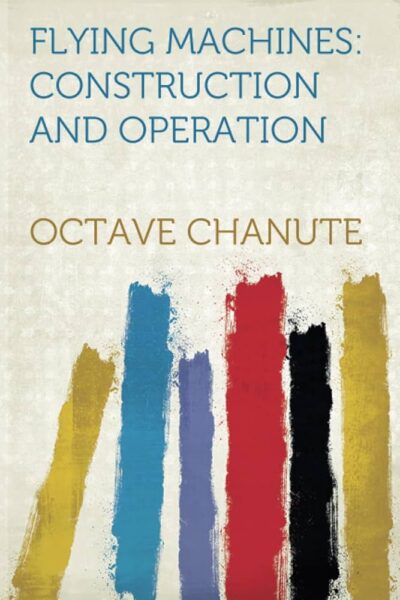54 Results in the "Non-Fiction" category
Biography & Memoir (434)
Books Like (8)
Business & Finance (26)
Children’s Fiction (203)
Dystopian (16)
Education & Learning (9)
Fantasy (1214)
fashion (1)
Fiction (4477)
Health & Wellness (21)
Historical Fiction (504)
Horror (159)
Literary Fiction (788)
Novel (229)
Others (106)
Philosophy (128)
Poetry (208)
Politics & History (131)
Posts (65)
Psychology (46)
Religion & Spirituality (1)
Romance Novel (535)
Science & Technology (82)
Science Fiction (220)
Self-Help & Personal Development (99)
Thriller / Mystery (858)
Travel & Adventure (2)
True Crime (55)
view (96)
Young Adult (284)
-
Chapter
Elzevirs
 Elzevirs, the collectible books printed by the Elzevir family in the Netherlands from the late 16th to early 18th centuries, hold a special place in the world of rare book collectors. The chapter opens with an anecdote that highlights the obsession with acquiring Elzevir editions, even leading a countryman to starve himself to afford these rare volumes. His particular fascination was with editions of poets printed by the Elzevirs, especially those with red letters and accurate dates. This devotion to…
Elzevirs, the collectible books printed by the Elzevir family in the Netherlands from the late 16th to early 18th centuries, hold a special place in the world of rare book collectors. The chapter opens with an anecdote that highlights the obsession with acquiring Elzevir editions, even leading a countryman to starve himself to afford these rare volumes. His particular fascination was with editions of poets printed by the Elzevirs, especially those with red letters and accurate dates. This devotion to…-
43.6 K • Ongoing
-
-
Chapter
Curiosities of Parish Registers
 Curiosities of Parish Registers explores the fascinating history and quirks of English parish records, which serve as invaluable documents tracing centuries of social, religious, and cultural evolution. Initially established through Cardinal Ximenes’ initiative in 1497, parish registers became a formal requirement in England under King Henry VIII in 1538. These registers, which document baptisms, marriages, and burials, have been critical in preserving historical data, offering crucial insights for…
Curiosities of Parish Registers explores the fascinating history and quirks of English parish records, which serve as invaluable documents tracing centuries of social, religious, and cultural evolution. Initially established through Cardinal Ximenes’ initiative in 1497, parish registers became a formal requirement in England under King Henry VIII in 1538. These registers, which document baptisms, marriages, and burials, have been critical in preserving historical data, offering crucial insights for…-
43.6 K • Ongoing
-
-
 Chapter XXVIII-Flying Machines: Construction and Operation functions as an essential lexicon for anyone seeking clarity in the evolving language of aviation. It begins by introducing foundational terms that outline the scope of aerial engineering, such as “Aerodrome,” described not as a place, but as a mechanical entity intended to operate within the sky’s domain. The entry sets the tone for what follows: a clear, structured breakdown of language specific to flying machine technology. “Aerofoil”…
Chapter XXVIII-Flying Machines: Construction and Operation functions as an essential lexicon for anyone seeking clarity in the evolving language of aviation. It begins by introducing foundational terms that outline the scope of aerial engineering, such as “Aerodrome,” described not as a place, but as a mechanical entity intended to operate within the sky’s domain. The entry sets the tone for what follows: a clear, structured breakdown of language specific to flying machine technology. “Aerofoil”…-
142.7 K • Ongoing
-
-
 Chapter XXVI-Flying Machines Construction And Operation offers a focused look into the evolution of early aviation, particularly the gradual but notable shift in American aircraft design. While biplanes had dominated the scene for years, interest in monoplanes began to rise, especially following the success of Curtiss and others at the 1910 International meet at Belmont Park. Though American entries in the monoplane class were limited, Curtiss's own single-wing creation drew considerable attention. His…
Chapter XXVI-Flying Machines Construction And Operation offers a focused look into the evolution of early aviation, particularly the gradual but notable shift in American aircraft design. While biplanes had dominated the scene for years, interest in monoplanes began to rise, especially following the success of Curtiss and others at the 1910 International meet at Belmont Park. Though American entries in the monoplane class were limited, Curtiss's own single-wing creation drew considerable attention. His…-
142.7 K • Ongoing
-
-
 Chapter XXV-Flying Machines Construction And Operation reflects a pivotal moment in aviation where advancements in engine technology significantly reshaped aircraft design. In the time since this book's initial release in 1910, rapid progress in motor development allowed for aircraft to operate with far smaller wing surfaces than before. This shift stemmed from both a drop in engine weight and an increase in engine power, enabling planes to achieve higher speeds while requiring less lift-generating area.…
Chapter XXV-Flying Machines Construction And Operation reflects a pivotal moment in aviation where advancements in engine technology significantly reshaped aircraft design. In the time since this book's initial release in 1910, rapid progress in motor development allowed for aircraft to operate with far smaller wing surfaces than before. This shift stemmed from both a drop in engine weight and an increase in engine power, enabling planes to achieve higher speeds while requiring less lift-generating area.…-
142.7 K • Ongoing
-
-
 Chapter XXIV - Flying Machines Construction And Operation turns its focus toward one of the most essential components in early aviation: the propeller. This chapter breaks down the complexity behind what might seem like a simple rotating blade, revealing how subtle variations in shape, pitch, and alignment can drastically impact a flying machine’s performance. Every designer works with the same basic goal—to generate maximum thrust with minimal energy—yet each brings personal techniques to the…
Chapter XXIV - Flying Machines Construction And Operation turns its focus toward one of the most essential components in early aviation: the propeller. This chapter breaks down the complexity behind what might seem like a simple rotating blade, revealing how subtle variations in shape, pitch, and alignment can drastically impact a flying machine’s performance. Every designer works with the same basic goal—to generate maximum thrust with minimal energy—yet each brings personal techniques to the…-
142.7 K • Ongoing
-
-
 Chapter XXIII - Flying Machines Construction And Operation presents a nuanced view of how innovation, legality, and accessibility intersect in early aviation history. The Wright brothers, known for their groundbreaking contributions to powered flight, make a significant gesture by allowing amateurs and non-commercial users to adopt their patented technology without restriction. This policy encourages experimentation and scientific exploration, as long as the use remains outside of profit-driven exhibitions…
Chapter XXIII - Flying Machines Construction And Operation presents a nuanced view of how innovation, legality, and accessibility intersect in early aviation history. The Wright brothers, known for their groundbreaking contributions to powered flight, make a significant gesture by allowing amateurs and non-commercial users to adopt their patented technology without restriction. This policy encourages experimentation and scientific exploration, as long as the use remains outside of profit-driven exhibitions…-
142.7 K • Ongoing
-
-
 Chapter XXII - Flying Machines Construction And Operation brings forward the insights of F. W. Lanchester, whose lecture to the Royal Society of Arts offered a technical and visionary take on aerial navigation. Rather than viewing flight as purely theoretical, he firmly positioned it within the realm of locomotive engineering, emphasizing performance over possibility. He challenged the viability of vertical flight, especially the helicopter, stating that such machines lacked the energy efficiency necessary…
Chapter XXII - Flying Machines Construction And Operation brings forward the insights of F. W. Lanchester, whose lecture to the Royal Society of Arts offered a technical and visionary take on aerial navigation. Rather than viewing flight as purely theoretical, he firmly positioned it within the realm of locomotive engineering, emphasizing performance over possibility. He challenged the viability of vertical flight, especially the helicopter, stating that such machines lacked the energy efficiency necessary…-
142.7 K • Ongoing
-
-
 Chapter XXI - The Compleat Angler invites readers into a closing conversation between Piscator and Venator, shaped by the calm of nature and the shared rhythm of angling. In these final exchanges, Piscator not only imparts fishing wisdom but also unveils the essence of a life well-lived. He emphasizes that a seasoned angler must care for his tools, not just to succeed in catching fish, but to respect the discipline itself. With simple instructions on dyeing lines and storing rods, Piscator models a…
Chapter XXI - The Compleat Angler invites readers into a closing conversation between Piscator and Venator, shaped by the calm of nature and the shared rhythm of angling. In these final exchanges, Piscator not only imparts fishing wisdom but also unveils the essence of a life well-lived. He emphasizes that a seasoned angler must care for his tools, not just to succeed in catching fish, but to respect the discipline itself. With simple instructions on dyeing lines and storing rods, Piscator models a…-
103.7 K • Ongoing
-
- Previous 1 … 8 9 10 … 31 Next

